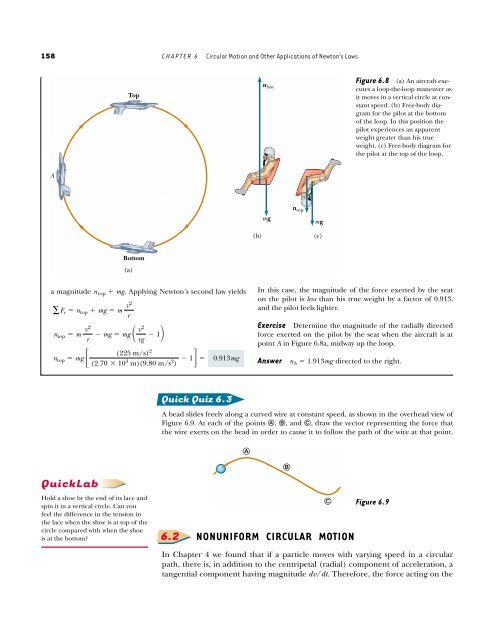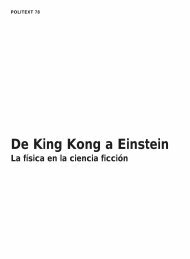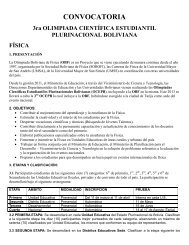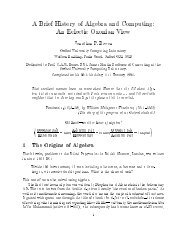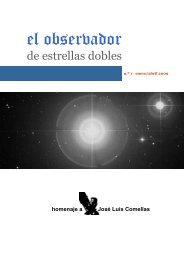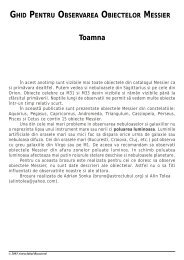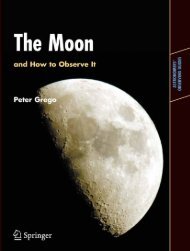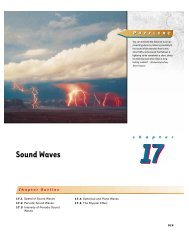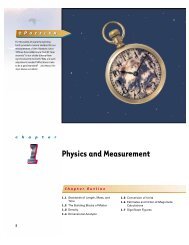Circular Motion and Other Applications of Newton's Laws
Circular Motion and Other Applications of Newton's Laws
Circular Motion and Other Applications of Newton's Laws
You also want an ePaper? Increase the reach of your titles
YUMPU automatically turns print PDFs into web optimized ePapers that Google loves.
158 CHAPTER 6 <strong>Circular</strong> <strong>Motion</strong> <strong>and</strong> <strong>Other</strong> <strong>Applications</strong> <strong>of</strong> Newton’s <strong>Laws</strong><br />
A<br />
Top<br />
Bottom<br />
(a)<br />
a magnitude n top � mg. Applying Newton’s second law yields<br />
�F r � n top � mg � m v2<br />
r<br />
ntop � m v2<br />
r � mg � mg � v2<br />
rg<br />
n top � mg �<br />
QuickLab<br />
(225 m/s) 2<br />
(2.70 � 103 m)(9.80 m/s2 � 1� �<br />
)<br />
Hold a shoe by the end <strong>of</strong> its lace <strong>and</strong><br />
spin it in a vertical circle. Can you<br />
feel the difference in the tension in<br />
the lace when the shoe is at top <strong>of</strong> the<br />
circle compared with when the shoe<br />
is at the bottom?<br />
� 1�<br />
Quick Quiz 6.3<br />
A bead slides freely along a curved wire at constant speed, as shown in the overhead view <strong>of</strong><br />
Figure 6.9. At each <strong>of</strong> the points �, �, <strong>and</strong> �, draw the vector representing the force that<br />
the wire exerts on the bead in order to cause it to follow the path <strong>of</strong> the wire at that point.<br />
6.2<br />
0.913mg<br />
�<br />
n bot<br />
mg<br />
n top<br />
In this case, the magnitude <strong>of</strong> the force exerted by the seat<br />
on the pilot is less than his true weight by a factor <strong>of</strong> 0.913,<br />
<strong>and</strong> the pilot feels lighter.<br />
Exercise Determine the magnitude <strong>of</strong> the radially directed<br />
force exerted on the pilot by the seat when the aircraft is at<br />
point A in Figure 6.8a, midway up the loop.<br />
Answer nA � 1.913mg directed to the right.<br />
NONUNIFORM CIRCULAR MOTION<br />
In Chapter 4 we found that if a particle moves with varying speed in a circular<br />
path, there is, in addition to the centripetal (radial) component <strong>of</strong> acceleration, a<br />
tangential component having magnitude dv/dt. Therefore, the force acting on the<br />
mg<br />
(b) (c)<br />
�<br />
�<br />
Figure 6.8 (a) An aircraft executes<br />
a loop-the-loop maneuver as<br />
it moves in a vertical circle at constant<br />
speed. (b) Free-body diagram<br />
for the pilot at the bottom<br />
<strong>of</strong> the loop. In this position the<br />
pilot experiences an apparent<br />
weight greater than his true<br />
weight. (c) Free-body diagram for<br />
the pilot at the top <strong>of</strong> the loop.<br />
Figure 6.9


